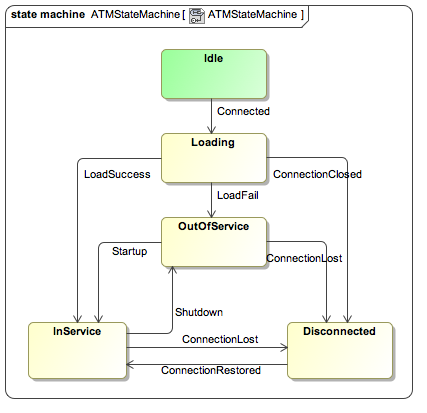The Squirrel Foundation offers a highly flexible and lightweight Java state machine implementation that’s perfect for enterprise usage. Just like the agile and alert squirrel, this framework is designed to help you manage complex states efficiently. In this guide, we will explore the basics of setting up your state machine and troubleshoot common problems to keep your implementation smooth.
What is a State Machine?
A state machine is a computational model designed to represent a system that transitions between a finite number of states in response to events. It can be visualized in a diagram, like the ATM state machine depicted below:

Quick Start Guide
To get started with the squirrel-foundation state machine, follow these steps:
1. Set Up Your Maven Project
- Include the squirrel-foundation dependency in your
pom.xmlfile:
org.squirrelframework
squirrel-foundation
0.3.10
2. Write Sample Code
Here’s how to create a state machine:
public class QuickStartSample {
enum FSMEvent { ToA, ToB }
@StateMachineParameters(stateType=String.class, eventType=FSMEvent.class, contextType=Integer.class)
static class StateMachineSample extends AbstractUntypedStateMachine {
protected void fromAToB(String from, String to, FSMEvent event, Integer context) {
System.out.println("Transition from " + from + " to " + to + " on event " + event + " with context " + context + ".");
}
public static void main(String[] args) {
// Build State Transitions
UntypedStateMachineBuilder builder = StateMachineBuilderFactory.create(StateMachineSample.class);
builder.externalTransition().from("A").to("B").on(FSMEvent.ToB);
// Use State Machine
UntypedStateMachine fsm = builder.newStateMachine("A");
fsm.fire(FSMEvent.ToB, 10);
System.out.println("Current state is " + fsm.getCurrentState());
}
}
}
3. Understanding the Code
Think of the state machine as a game where different levels represent states and events dictate the transitions from one level to another. The sample code above creates a state machine where:
- The current state is “A”.
- When the event
ToBoccurs, it transitions to state “B”. - Context can be used to send additional data during the transition.
Troubleshooting Common Issues
If you encounter issues while setting up your squirrel-foundation state machine, consider the following troubleshooting tips:
- Dependencies not loading: Ensure that your
pom.xmlfile is correctly configured and that Maven has successfully downloaded the dependency. - Event not firing: Double-check your event listener logic and ensure events are correctly defined in your state machine.
- Error during transition: Inspect the transition paths and ensure that conditions for each transition are being met.
For more insights, updates, or to collaborate on AI development projects, stay connected with fxis.ai.
Additional Insights
At fxis.ai, we believe that such advancements are crucial for the future of AI, as they enable more comprehensive and effective solutions. Our team is continually exploring new methodologies to push the envelope in artificial intelligence, ensuring that our clients benefit from the latest technological innovations.
Conclusion
The Squirrel Foundation’s state machine implementation is a powerful tool for managing state-driven applications. By following this guide, you can quickly set up your state machine and troubleshoot any issues that arise during development. Happy coding!

